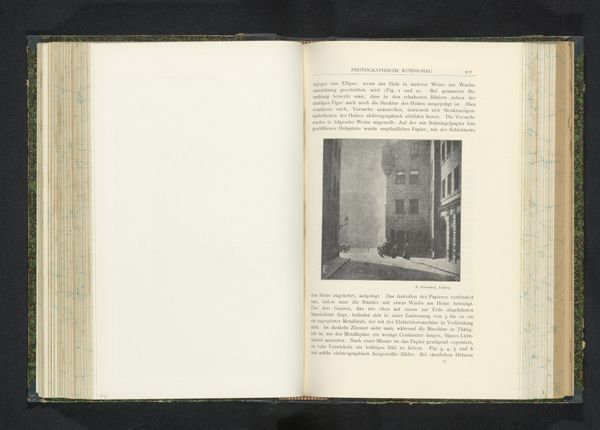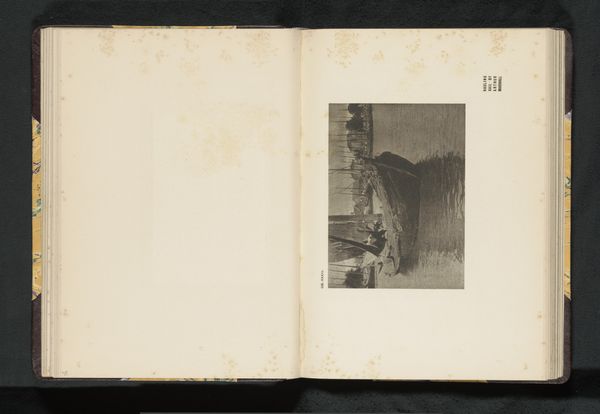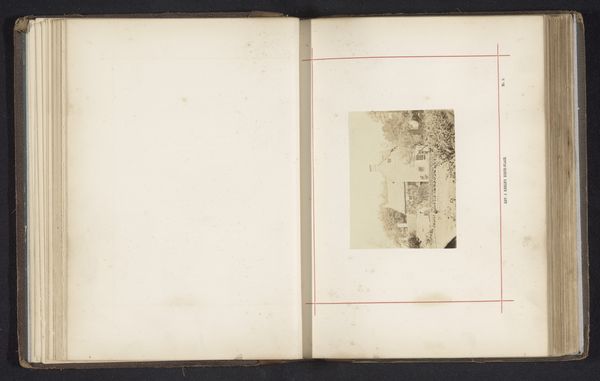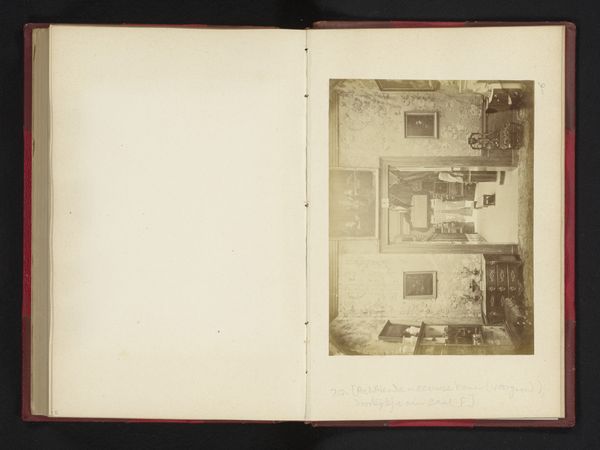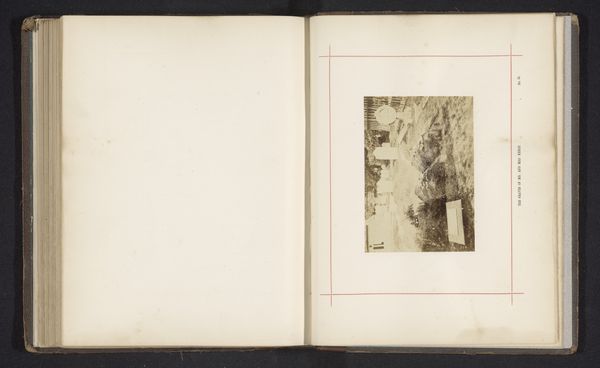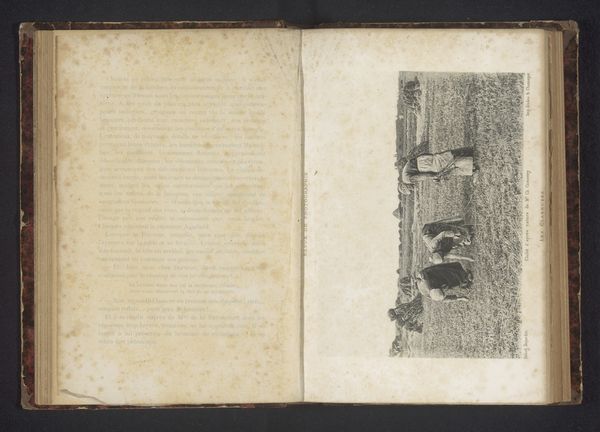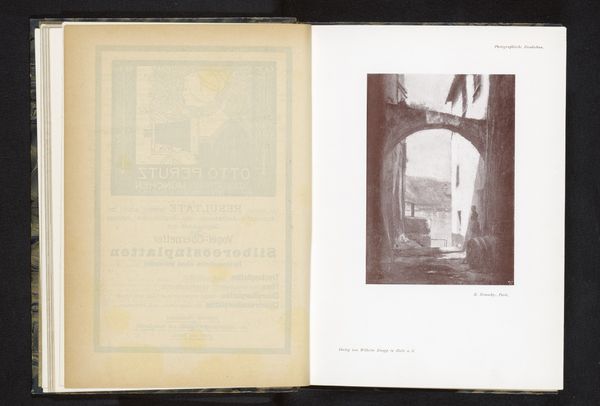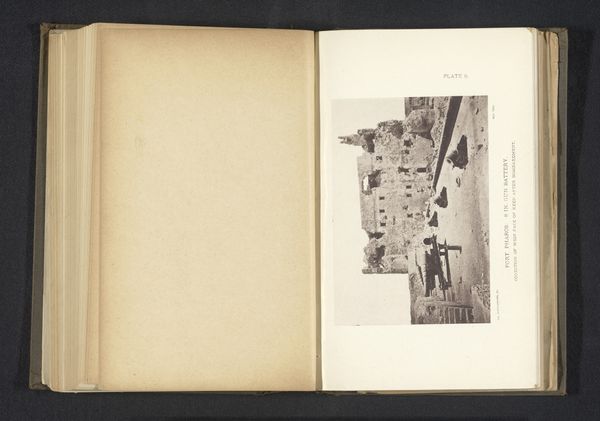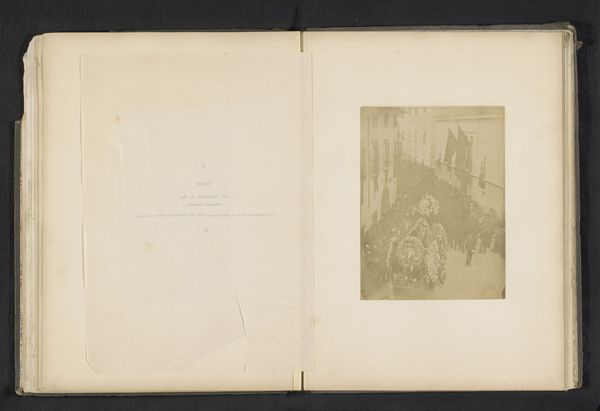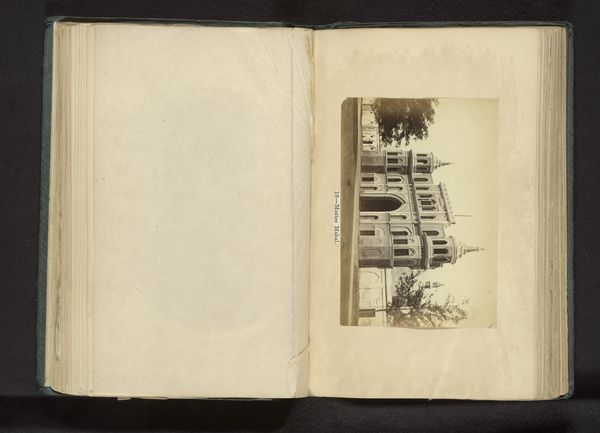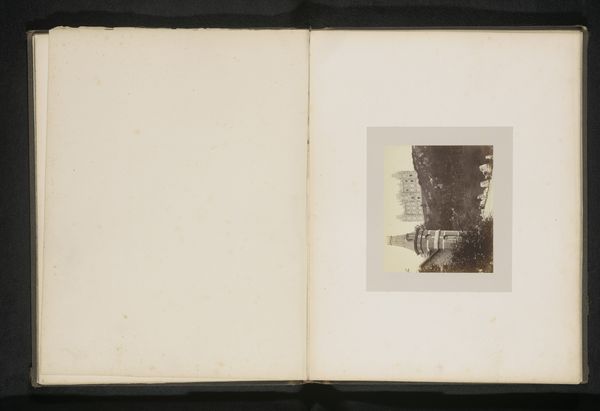
Fotoreproductie van het schilderij 'Jerusalem, Via Dolorosa' door Conway Shipley before 1865
0:00
0:00
#
aged paper
#
toned paper
#
water colours
#
ink paper printed
#
fading type
#
coloured pencil
#
ink colored
#
watercolour bleed
#
watercolour illustration
#
street
#
watercolor
Dimensions: height 163 mm, width 117 mm
Copyright: Rijks Museum: Open Domain
Curator: This is a photoreproduction predating 1865, "Jerusalem, Via Dolorosa," after the painting by Conway Shipley, rendered with ink, colored pencil, and watercolor. Editor: Its stark tonal quality immediately strikes me. The aged paper, marked with blemishes and faded impressions, gives the scene a palpable weight. It almost feels like holding a fragment of time. Curator: Observe how the photographer utilizes the stark contrast between light and shadow to create depth within the composition. The perspective draws the eye towards a distant archway. Consider the meticulous detail used in representing the architectural structure; note the arrangement of shapes, which lend structural integrity. Editor: It makes me think about the logistics: transporting heavy photographic equipment to Jerusalem in that era, the complex chemical processes involved in creating this reproduction...what level of craft was required, who were the people behind it and what narratives about this place were they aiming to construct or reproduce? Curator: A potent tension resides in the flatness of the photograph, versus the artist's intended evocation of deep space. Semiotically, we must recognize the dual representation occurring; a photoreproduction mediating Shipley's initial painterly expression, an indexical trace layered upon representational form. Editor: Absolutely. And considering the cultural context of Jerusalem then, the act of capturing and disseminating such images undoubtedly held implications. The materiality of the aged print carries its own historical burden, evoking colonialism, religious fascination, and the burgeoning tourist industry that developed in relation to the Holy Land. Curator: Your point underscores the rich strata of interpretations this piece allows. By understanding its formal structures and inherent pictorial qualities, it provides us to not only examine artistic intents, but the history of artistic reproduction too. Editor: Indeed. Seeing art this way--not just for what it represents but for its complex modes of production and consumption--allows for a fuller understanding of how images construct historical memory.
Comments
No comments
Be the first to comment and join the conversation on the ultimate creative platform.
